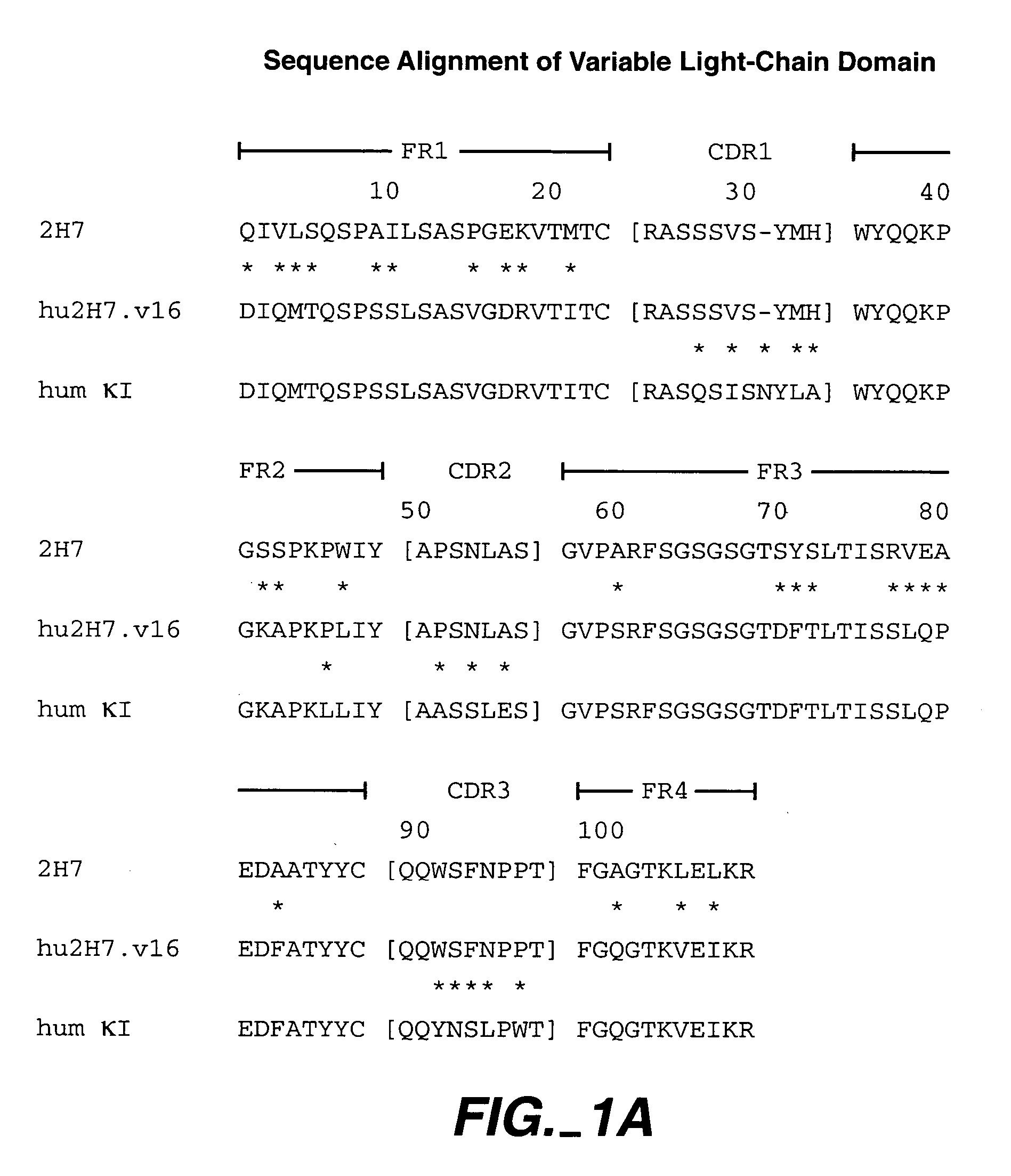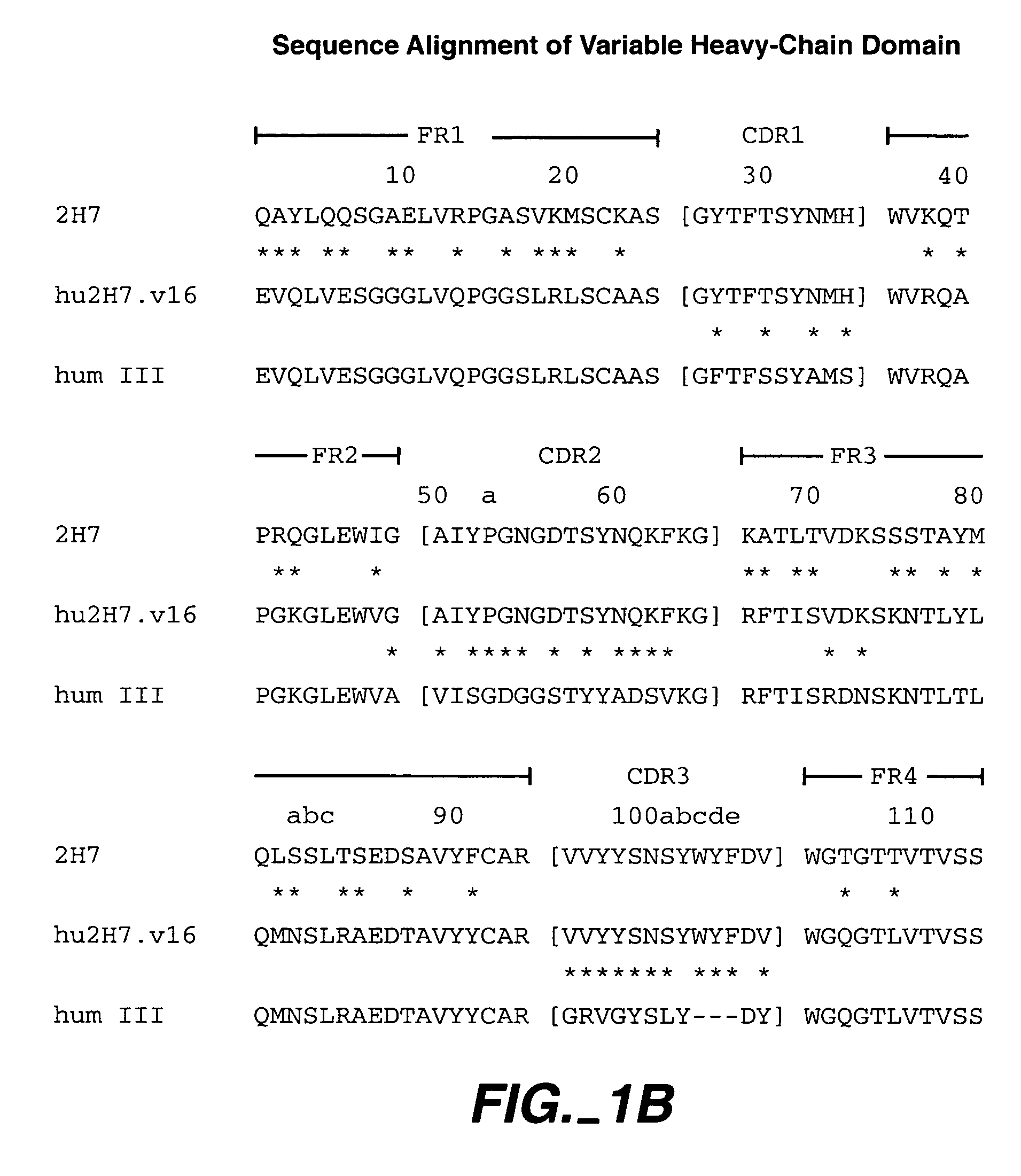Method for treating lupus
a treatment method and lupus technology, applied in the field of lupus treatment methods, can solve the problems of no really curative treatment for patients diagnosed with sle, potential harmful side effects for patients being treated, severe tissue damage, etc., and achieve the effect of expanding the therapy role and expanding the therapy rol
- Summary
- Abstract
- Description
- Claims
- Application Information
AI Technical Summary
Benefits of technology
Problems solved by technology
Method used
Image
Examples
example 1
Study of Efficacy and Safety of Rituximab in Subjects with ISN / RPS 2003 Class III or IV Lupus Nephritis
[0225] This study assesses the superiority of efficacy and safety of rituximab (MABTHERA® / RITUXAN®) added to mycophenolate mofetil (MMF) and corticosteroids compared to MMF plus corticosteroids alone in subjects with active ISN / RPS 2003 class III or IV lupus nephritis. Rituximab (1000 mg×2) is administered i.v. in two initial doses at days 1 and 15 with IV and oral corticosteroids, followed by 1 g×2 at six months. This experimental regimen (rituximab added to MMF+corticosteroids) is compared to placebo (placebo added to MMF+corticosteroids). This rituximab-based regimen challenges the current standard of care, eliminates patient exposure to CYTOXAN® cyclophosphamide (CYC) and its known toxicities, and demonstrates improved net clinical benefit. Patients are monitored for disease activity, both renal and extrarenal, flares of disease, and safety events over the 52 weeks of the stud...
example 2
A Study to Evaluate the Efficacy and Safety of Rituximab in Subjects with Moderate-to-Severe Systemic Lupus Erythematosus
[0243] This study assesses the efficacy and safety of rituximab (MABTHERA® / RITUXAN®) added to prednisone and one additional immunosuppressant (MMF, methotrexate (MTX), azathioprine (AZA), or 6-mercaptopurine (6-MP)) compared with placebo in subjects with active SLE without active glomerulonephritis at enrollment for a Phase II / III trial. Subjects may qualify by exhibiting a severe Lupus Flare as defined by one new BILAG A criterion or two new BILAG B criteria and will receive an initial oral prednisone regimen of 0.5 mg / kg / day, 0.75 mg / kg / day, or 1.0 mg / kg / day, based on their BILAG score and prestudy prednisone dose, over a 7-day period. Subjects are then randomized to receive rituximab or placebo and at day 16 will initiate a prednisone taper over 10 weeks to achieve a prednisone dose of <10 mg / day. Subjects will continue to taper their corticosteroid dose as to...
example 3
Humanized 2H7 Variants Useful Herein
[0266] Useful for purposes herein are humanized 2H7 antibodies comprising one, two, three, four, five, or six of the following CDR sequences: [0267] CDR L1 sequence RASSSVSYXH wherein X is M or L (SEQ ID NO:18), for example, SEQ ID NO:4 (FIG. 1A), [0268] CDR L2 sequence of SEQ ID NO:5 (FIG. 1A), [0269] CDR L3 sequence QQWXFNPPT wherein X is S or A (SEQ ID NO:19), for example, SEQ ID NO:6 (FIG. 1A), [0270] CDR H1 sequence of SEQ ID NO:10 (FIG. 1B), [0271] CDR H2 sequence of AIYPGNGXTSYNQKFKG wherein X is D or A (SEQ ID NO:20), for example, SEQ ID NO:11 (FIG. 1B), and [0272] CDR H3 sequence of VVYYSXXYWYFDV wherein the X at position 6 is N, A, Y, W, or D, and the X at position 7 is S or R (SEQ ID NO:21), for example, SEQ ID NO:12 (FIG. 1B).
[0273] The CDR sequences above are generally present within human variable light- and variable heavy-framework sequences, such as substantially the human consensus FR residues of human light-chain kappa subgroup...
PUM
| Property | Measurement | Unit |
|---|---|---|
| time | aaaaa | aaaaa |
| time | aaaaa | aaaaa |
| time | aaaaa | aaaaa |
Abstract
Description
Claims
Application Information
 Login to View More
Login to View More - R&D
- Intellectual Property
- Life Sciences
- Materials
- Tech Scout
- Unparalleled Data Quality
- Higher Quality Content
- 60% Fewer Hallucinations
Browse by: Latest US Patents, China's latest patents, Technical Efficacy Thesaurus, Application Domain, Technology Topic, Popular Technical Reports.
© 2025 PatSnap. All rights reserved.Legal|Privacy policy|Modern Slavery Act Transparency Statement|Sitemap|About US| Contact US: help@patsnap.com



